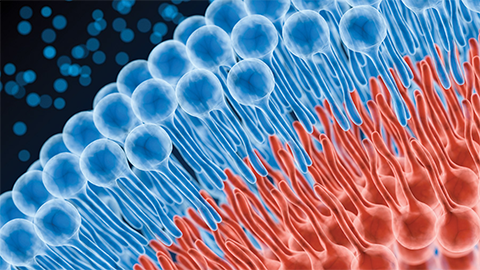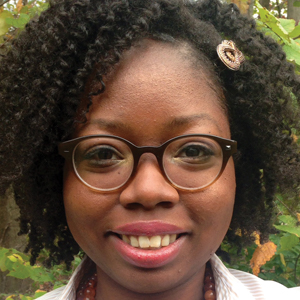From Smithsonian fellow to research botanist
For this week’s column, I interviewed Manuela Dal Forno, a research botanist at the Botanical Research Institute of Texas in Forth Worth who specializes in lichens, which are symbotic systems of multiple species growing together.
“The hardest part about getting a job as a lichenologist is to convince people the importance of hiring a lichenologist,” Dal Forno told me.
An interest takes root

Dal Forno was born and raised in Brazil. During her freshman year at the Universidade de Santa Cruz do Sul, she attended a workshop that featured two visiting lichenologists and she was amazed by their work. To learn more about lichens, she volunteered, interned and sought out mentorship by one of the visiting lichenologists.
After graduating with her bachelor’s in biology, she joined Sionara Eliasaro’s lab at the Universidade Federal do Paraná and earned her master’s in botany. She then did a one-year land-management internship at The Audubon Center of North Woods (now called the Osprey Wilds Environmental Learning Center) in Sandstone, Minnesota, where she helped teach classes for the public.
She then began doctoral studies of lichens at George Mason University with James D. Lawrey of the biology department and Robert Lücking of the Chicago-based Field Museum. In 2015, she earned her Ph.D. in environmental science and public policy.
It was then that Dal Forno decided to pursue a nonacademic career.
She secured a National Science Foundation-supported postdoctoral fellowship at the Smithsonian National Museum of Natural History. She explored various lichen collections and addressed questions related to systematics, the microbiome, evolution and genomics.
She then won the Smithsonian’s two-year Peter Buck fellowship, which enabled her to continue working with the same group of lichens but ask new questions about them.

The daily life of a lichenologist
After her Smithsonian fellowships, Dal Forno received a job offer to work as a research botanist at the Botanical Research Institute of Texas.
BRIT is a nonprofit scientific research and learning center. Since its founding in 1987, its collections have grown to 1.4 million plant specimens. The institute’s specimens, library (physical and digital) and other resources are available for use by scientists and other professionals. The institute also does significant public education. (BRIT recently merged with the Fort Worth Botanic Garden.)
“For my work, I take an integrative approach or integrative taxonomy. I go to the field. I collect samples. I look at specimens under a microscope. I also do the genetic work for those specimens. My day-to-day (schedule) can be really flexible, but I'm either in the lab, in my office or in the field,” she said.
Careers for lichenologists
Dal Forno was the first lichenologist I’d ever met. I asked her about career options for lichenologists.

Museum scientist: As I explained above, Dal Forno was a postdoctoral researcher at the Smithsonian. A museum, she said, is a good place for lichenologists to dive deep into research, curate and educate the general public.
Full-time researcher: Research is not limited to just academic institutions. Museums, botanical gardens or herbariums all need lichenologists who work on a range of projects.
Various lab jobs: Lichenologists have a strong foundation in biology and botany. They can work as lab technicians or managers within or outside of lichenology. Their skills can be applied to labs that focus on genomic analysis or molecular biology.
Curator: There are about 20,000 known species of lichens, and there are untold numbers that are yet to be discovered, collected and analyzed. On field trips, Dal Forno collects multiple samples; upon return, she processes and incorporates them into the herbarium. Curators ensure best care practices of specimens in collections to understand classic taxonomy/systematics and to facilitate research, exhibits and acquisitions.
Federal or state employee: Governments even need lichenologists. “Lichens can be used as bioindicators of the air quality. There are lichenologists that are employed at the state or federal levels who investigate community patterns and threshold levels of pollution utilizing lichens,” she said.
Advice for job seekers
Even though she is a lichenologist, Dal Forno’s advice can be applied to any scientist who is interested in a career path beyond academia or industry.
Value every step of your career path: Just as lichens are hiding at plain sight, there are many science careers we still do not know about. Take time to determine what you want to do. Dal Forno said that she knew she wanted to focus on lichen research very early, but she acknowledged that is not always the case. She recommended interning at different places (labs, museums, etc.) to explore your passions and maybe discover something new about yourself.
Go beyond your specialty: As scientists, we sometimes stay in our niche. Seek out collaborations and connect with other scientists who are doing different work. As a Ph.D. student, Dal Forno took courses in policy and environmental law, which broadened her perspective.
Look for mentors who’ll nurture you: Just because someone has a big name, title or position at a top institution does not mean they'll be a good mentor, she said. Look for mentors who will give you space to explore and respect your unique background and circumstances.
Finally, Dal Forno said we all should remember: “#WeAreAllLichens.We all depend on each other and other species to survive and thrive.”
Check out her website and follow her on Twitter.
Skills and qualities
In addition to understanding biology, botany and laboratory techniques, lichenologists need to have the following skills and qualities.
Communication: A large part of Manuela Dal Forno’s job is collaborating with others. This includes U.S. scientists, researchers who are abroad and the general public. Whatever the case, she has to be prepared and able to share her ideas clearly.
Flexibility: One day you might be in the research lab, the next day in the office and the next day in the field. You need to be comfortable with each day being different.
A sense of adventure: Lichens are everywhere, which means you, like Dal Forno, might need to travel a lot. In late 2019, Dal Forno spent a month in the Philippines collecting samples.
Curiosity: There’s a lot to learn. Explore lab facilities, read the literature and ask questions.
Enjoy reading ASBMB Today?
Become a member to receive the print edition four times a year and the digital edition monthly.
Learn moreFeatured jobs
from the ASBMB career center
Get the latest from ASBMB Today
Enter your email address, and we’ll send you a weekly email with recent articles, interviews and more.
Latest in Careers
Careers highlights or most popular articles

Designing life’s building blocks with AI
Tanja Kortemme, a professor at the University of California, San Francisco, will discuss her research using computational biology to engineer proteins at the 2026 ASBMB Annual Meeting.

Upcoming opportunities
#ASBMB26 late-breaking abstract submission opens on December 8. Register by Jan. 15 to get the early rate on our Annual Meeting.

Make your abstract stand out
Ensure your research is impossible to overlook. Get quick, practical reminders for crafting an abstract that attracts readers and helps you build connections at the conference.

Inside industry postdocs
As more Ph.D. scientists look beyond academia, industry postdocs offer a new kind of training, where mentorship meets mission-driven research. Fellows at Pfizer and Genentech share how these programs prepare them to translate discovery into impact.

Upcoming opportunities
The Lipid Research Division Seminar Series returns Oct. 15 with talks on recent advances in triglyceride cycling in adipocytes.

Writing with AI turns chaos into clarity
Associate professor shares how generative AI, used as a creative whiteboard, helps scientists refine ideas, structure complexity and sharpen clarity — transforming the messy process of discovery into compelling science writing.

